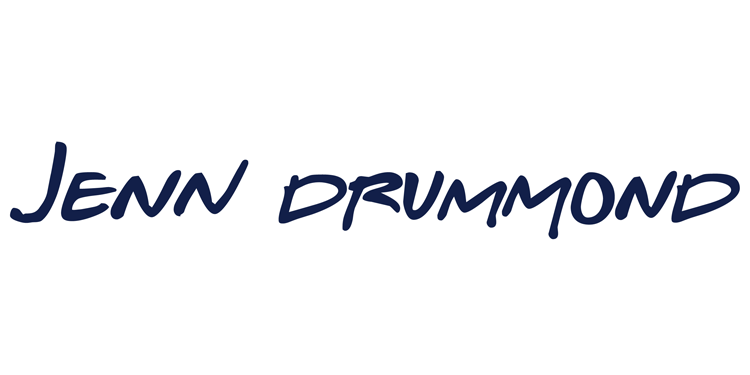In the dynamic and ever-changing landscape of modern business, elevating your team’s performance stands as a linchpin for success. Whether you’re a seasoned entrepreneur steering a company or a rising professional navigating the corporate realm, the art of nurturing a high-performing team is non-negotiable.
Delving into the intricacies of team dynamics, let’s explore seven strategies to turbocharge your team’s productivity. My hope is these insights provide a roadmap on how to improve team performance and ultimately transform your team into a powerhouse of efficiency and collaboration.
Assess Current Team Efficiency
 Embarking on the path toward enhanced team performance necessitates a thorough evaluation of your existing state. This foundational step involves delving deep into the intricacies of your team and dissecting their strengths and weaknesses with a discerning eye. By understanding the unique skill sets and challenges that each team member brings to the table, you gain invaluable insights.
Embarking on the path toward enhanced team performance necessitates a thorough evaluation of your existing state. This foundational step involves delving deep into the intricacies of your team and dissecting their strengths and weaknesses with a discerning eye. By understanding the unique skill sets and challenges that each team member brings to the table, you gain invaluable insights.
This initial assessment is akin to mapping your journey: knowing your current location is indispensable for charting a course toward your destination. Acknowledging your starting point not only fosters self-awareness but also lays the groundwork for a targeted and effective growth strategy.
Once you’ve identified the individual strengths and areas of improvement within your team, a transformative process begins. This awareness is the catalyst for tailored coaching, skill development initiatives, and strategic task assignments.
Celebrating the team’s strengths and nurturing them further can elevate morale and foster a sense of accomplishment. Simultaneously, addressing areas of growth with a constructive approach can pave the way for targeted training programs, encouraging professional and personal growth.
And it doesn’t stop there: leveraging this understanding will fuel your team’s progress. Armed with this insightful comprehension of your team’s dynamics, you can strategically align tasks, responsibilities, and collaborations.
This targeted approach fosters an environment where each team member’s talents shine, complementing one another harmoniously. Embracing both strengths and weaknesses as integral parts of the team’s identity, you can sculpt a nurturing atmosphere where every member feels valued and empowered.
Clear Communication
 Speaking of feeling empowered, there is a quote from vulnerability expert and research pioneer Brene Brown that comes to mind for me here: clear is kind.
Speaking of feeling empowered, there is a quote from vulnerability expert and research pioneer Brene Brown that comes to mind for me here: clear is kind.
Effective communication forms the bedrock of any successful team, and for me, that starts with clarity. Clear communication acts as a guiding light, illuminating our path toward shared goals and objectives.
It’s more than just words exchanged; it’s about fostering a culture where ideas flow freely and everyone’s perspective is valued. This open dialogue not only nurtures a sense of camaraderie but also paves the way for innovation and creative problem-solving.
Clear communication resonates profoundly in our team dynamics. By fostering an environment where every team member feels heard and understood, we minimize misunderstandings and conflicts. Clarity in communication ensures that everyone comprehends their roles and responsibilities, eliminating room for confusion.
This shared understanding forms the bedrock upon which trust is built. When team members are confident that their thoughts and concerns are acknowledged, it fosters a sense of belonging and encourages active participation. As a result, our team operates cohesively, with each member synchronized in purpose and vision.
Moreover, clear communication is a catalyst for collaboration and synergy. In our team, open communication channels have become conduits for the exchange of innovative ideas and diverse perspectives.
It encourages a culture where constructive feedback is welcomed and learning from both successes and failures is celebrated. This transparent approach not only strengthens our professional relationships but also nurtures a sense of mutual respect and understanding.
Goal Setting and Prioritization
 In my role as a leader, I’ve come to appreciate the transformative power of setting clear and achievable goals. It’s not just about having a vision; it’s about breaking down that vision into actionable, measurable objectives. SMART goals — Specific, Measurable, Achievable, Relevant, and Time-bound — have been a guiding principle in my goal-setting endeavors.
In my role as a leader, I’ve come to appreciate the transformative power of setting clear and achievable goals. It’s not just about having a vision; it’s about breaking down that vision into actionable, measurable objectives. SMART goals — Specific, Measurable, Achievable, Relevant, and Time-bound — have been a guiding principle in my goal-setting endeavors.
These criteria provide a structured framework that ensures our objectives are well-defined, quantifiable, realistic, aligned with our mission, and bound by a deadline. By adhering to this method, we not only sharpen our focus but also instill a sense of purpose within our team. Each member understands their role in achieving these goals, fostering a collective drive toward success.
Prioritizing tasks is another vital aspect of goal achievement that I advocate for, and it aligns seamlessly with our goal-setting philosophy. We meticulously evaluate tasks based on their importance, ensuring they harmonize with our overarching organizational objectives.
By discerning which tasks hold the most significant impact on our mission, we can allocate our resources and efforts effectively. This strategic alignment ensures that our daily activities contribute directly to the fulfillment of our broader goals.
Regular reassessment and adjustment are equally crucial; the dynamic nature of business demands flexibility in our approach. By continuously evaluating our progress and adapting our goals as needed, we maintain relevance and motivation within the team. This agile mindset enables us to respond adeptly to changing circumstances, ensuring our efforts remain purposeful and results-driven.
Delegation of Tasks
 Mastering the art of delegation stands as a testament to effective leadership, capable of unlocking unparalleled efficiency within a team. Understanding each team member’s unique strengths and capabilities is the first step. By recognizing these individual talents, I can strategically delegate tasks, ensuring they align with each person’s expertise.
Mastering the art of delegation stands as a testament to effective leadership, capable of unlocking unparalleled efficiency within a team. Understanding each team member’s unique strengths and capabilities is the first step. By recognizing these individual talents, I can strategically delegate tasks, ensuring they align with each person’s expertise.
This targeted approach not only optimizes the utilization of our team’s skills but also empowers team members to excel in their assigned roles. When tasks are matched with the right skill sets, team members are more confident in their abilities, leading to increased productivity and higher-quality outcomes.
Moreover, by entrusting responsibilities to individuals best suited for the job, we foster a collaborative environment where everyone plays a crucial part. This sense of purpose enhances team morale, creating a positive atmosphere where team members feel valued and acknowledged for their contributions.
Empowering the team through delegation goes beyond task assignments; it instills a profound sense of ownership. When team members are entrusted with specific tasks, they take greater accountability for their work. This ownership mentality cultivates a culture of responsibility, where individuals are motivated to excel, not just for the team but for their personal growth as well. It encourages a proactive mindset, where team members actively seek solutions and take initiative, leading to a more self-reliant and efficient team.
Additionally, this empowerment creates a domino effect, inspiring others to step up and contribute their best efforts. Through strategic and mindful delegation, our team becomes a dynamic entity where each member’s strengths are harnessed, and a collective sense of ownership propels us toward our shared goals.
Time Management Techniques
 Time is a valuable resource, and managing it wisely is imperative. Recognizing this, I advocate for a strategic approach to time management within our team. Encouraging our members to embrace techniques such as the Pomodoro method or time blocking has proven transformative.
Time is a valuable resource, and managing it wisely is imperative. Recognizing this, I advocate for a strategic approach to time management within our team. Encouraging our members to embrace techniques such as the Pomodoro method or time blocking has proven transformative.
The Pomodoro method, which revolves around short, focused bursts of work (typically 25 minutes) followed by short breaks, optimizes concentration and prevents burnout. Time blocking, on the other hand, involves scheduling specific tasks during designated time slots, ensuring undivided attention to each activity.
By integrating these methods into our daily routines, we’re not just managing time; we’re maximizing it. Team members find that these techniques provide a structured framework for their workday, promoting laser-sharp focus and sustained productivity.
Moreover, these time management strategies do more than just enhance productivity; they foster a healthier work-life balance. By respecting our team members’ time and promoting efficient work habits, we enable them to accomplish tasks more swiftly, allowing for more downtime.
This balance is crucial in preventing burnout and maintaining long-term motivation. As a result, our team operates with a renewed sense of energy and enthusiasm, tackling tasks with precision and purpose.
By valuing time as a precious resource and equipping our team with effective time management tools, we not only boost efficiency but also nurture a work environment where individuals thrive both professionally and personally..
Skill Development, Training, and Feedback
 Investing in the continuous development of our team’s skills is an investment in our collective future. I firmly believe that fostering a culture of lifelong learning is key to staying ahead in today’s competitive landscape.
Investing in the continuous development of our team’s skills is an investment in our collective future. I firmly believe that fostering a culture of lifelong learning is key to staying ahead in today’s competitive landscape.
Encouraging team members to engage in continuous learning not only hones their expertise but also equips them to adapt to evolving challenges. This commitment to growth is not limited to individual pursuits; it extends to our team as a whole.
By providing tailored training opportunities, interactive workshops, and access to valuable resources, we empower our team to expand their knowledge base and refine their skills. These initiatives not only enhance their capabilities but also align their expertise with the dynamic needs of our organization.
In a rapidly changing world, a team that actively pursues learning not only keeps pace with industry trends but also pioneers new avenues of innovation, ensuring our collective success in the long run.
Another tier of skill development and continuous learning occurs in a healthy feedback loop. I believe that constructive feedback serves as a compass guiding our team toward continuous improvement and excellence.
Implementing regular performance evaluations is a practice deeply ingrained in our team culture. These evaluations serve as invaluable checkpoints, allowing us to celebrate milestones and recognize the dedication and hard work of our team members. However, they also provide a platform to address areas that need refinement.
Balance is key here as well. While acknowledging achievements and milestones, we delve into discussions about areas that warrant enhancement. This balanced approach ensures that feedback sessions are not merely critiques but opportunities for growth. Team members are encouraged to reflect on their progress, celebrate their successes, and actively seek ways to refine their skills and strategies.
This constructive dialogue nurtures a spirit of resilience and adaptability within our team, fostering an environment where feedback is viewed as a stepping stone toward greater competence.
Furthermore, this commitment to balanced feedback amplifies our team’s sense of accountability and ownership. Team members understand that their growth is a collaborative effort between them and the organization. They actively engage in their professional development, absorbing feedback as a catalyst for improvement rather than a critique.
This proactive approach not only accelerates personal and team growth but also strengthens the emotional connection within the team. It fosters a culture where open communication is embraced, and team members are motivated to reach new heights collectively.
Celebrating Achievements
 Dancing together in celebration on the metaphorical mountaintops of team success is my jam. Acknowledging and celebrating achievements, regardless of their scale, plays a pivotal role in nurturing a positive and motivated team environment.
Dancing together in celebration on the metaphorical mountaintops of team success is my jam. Acknowledging and celebrating achievements, regardless of their scale, plays a pivotal role in nurturing a positive and motivated team environment.
In our team, we make it a point to recognize every milestone, completed project, and individual accomplishment. Whether it’s a major project culmination or a team member mastering a new skill, these moments are not just fleeting victories; they represent the collective dedication and effort of the entire team.
This acknowledgment serves as more than just validation; it’s a testament to the team’s hard work and commitment. By publicly appreciating the individual and collective contributions, we create a sense of pride and accomplishment, inspiring team members to consistently strive for excellence.
Furthermore, this culture of celebration has a ripple effect on our team’s morale and productivity. When achievements are acknowledged and celebrated, team members feel valued and recognized for their efforts. This positive reinforcement boosts their confidence, motivating them to continue their exceptional performance.
It fosters a sense of camaraderie, where every team member understands the impact of their work on the larger organizational goals. This shared sense of purpose fuels a spirit of collaboration and dedication, encouraging everyone to contribute their best. In essence, celebrating achievements isn’t just a momentary event; it becomes an ongoing catalyst for sustained enthusiasm and high-quality work within our team.
Improving your team’s efficiency involves a holistic approach, encompassing clear communication, effective delegation, skill development, and employee well-being.
As you navigate the challenges of the modern business world, remember your team isn’t just a collection of individuals; it’s a collective force capable of achieving remarkable feats when guided by vision, strategy, and a commitment to continuous growth.
Here’s to your team’s journey toward extraordinary achievements and a future defined by excellence.





Related Posts
7 Reasons Why Professional Development Is Important
How to Create The Ultimate Self-Care Plan
7 Secrets to Becoming a Better Employee